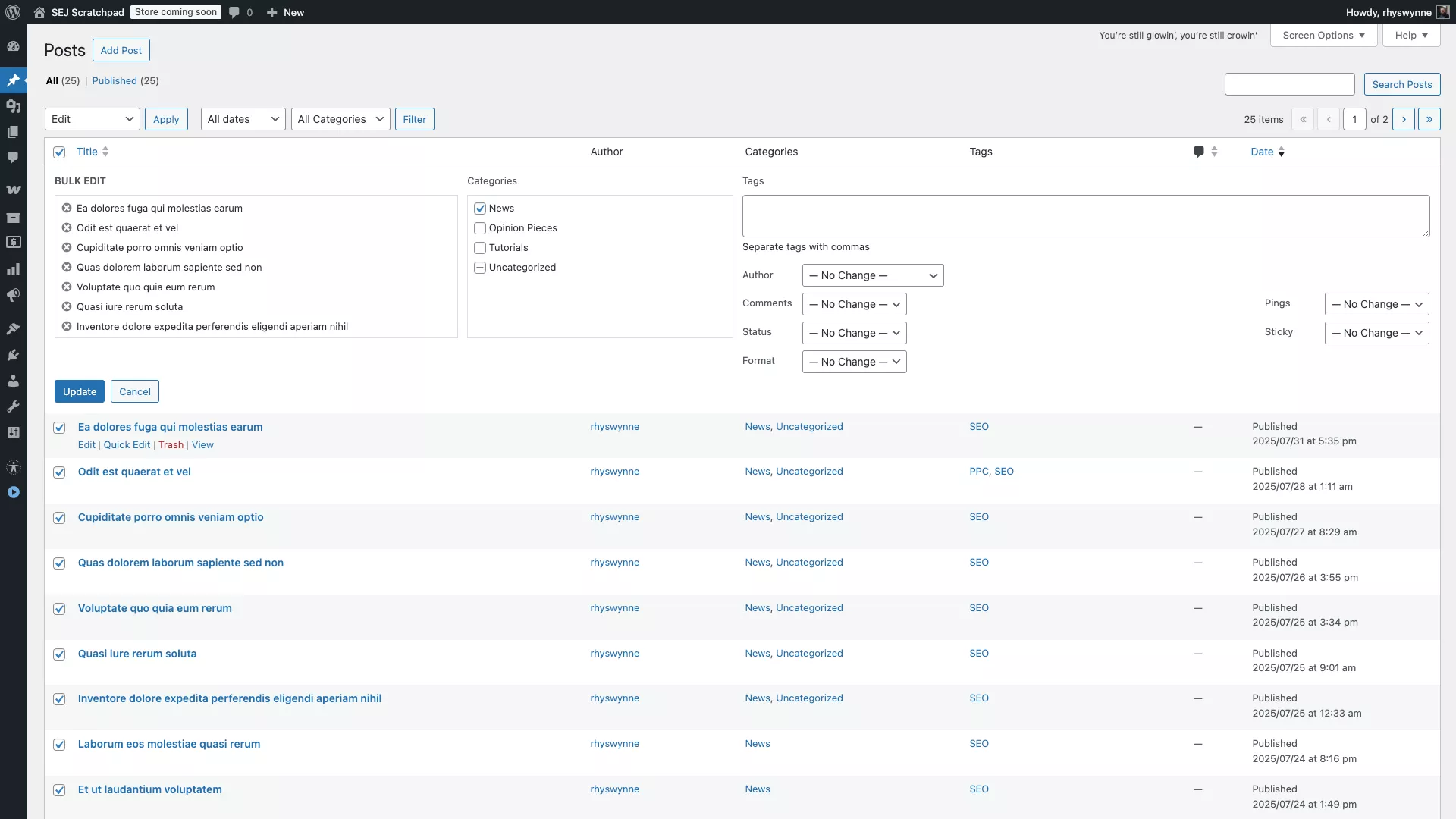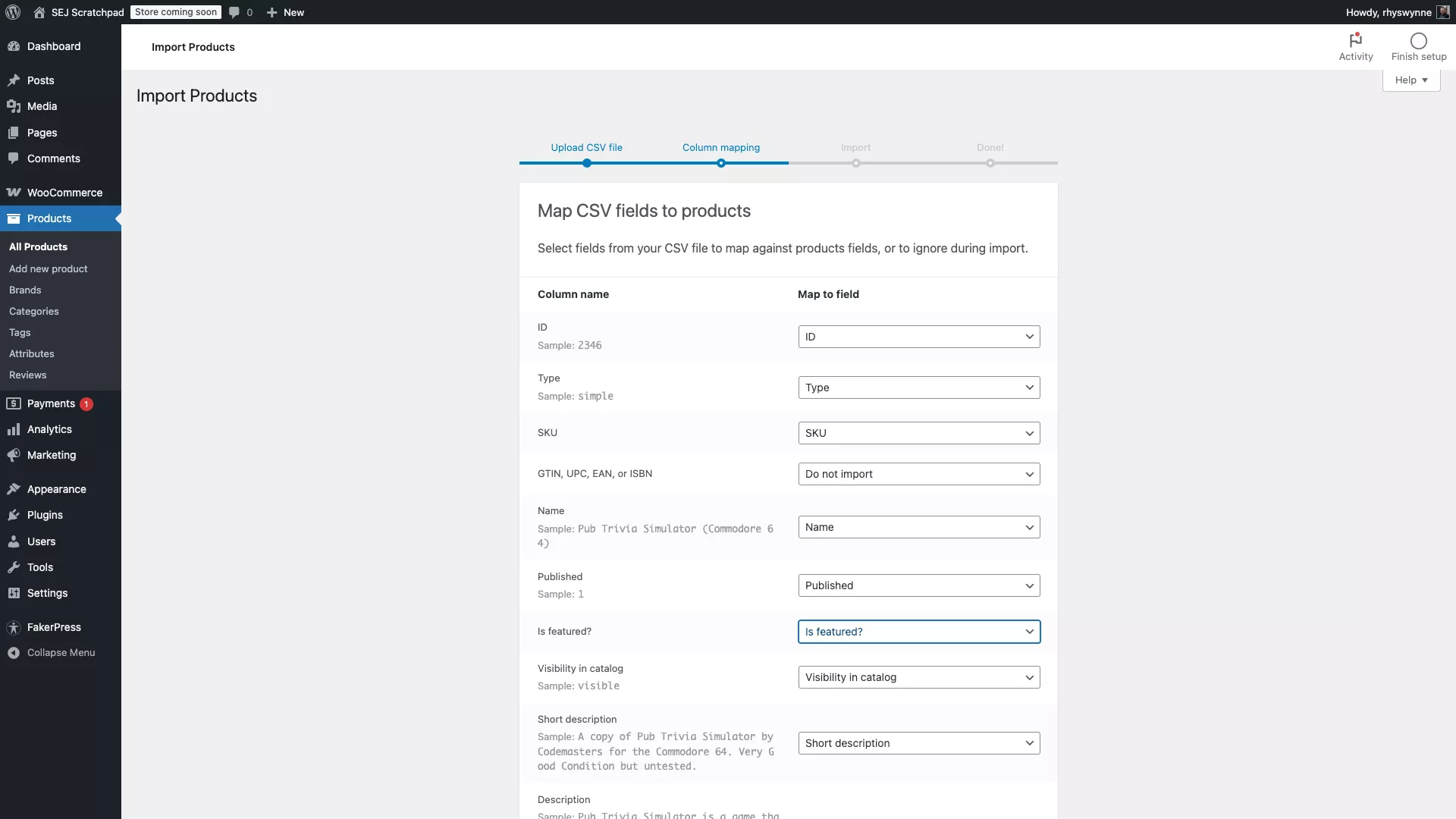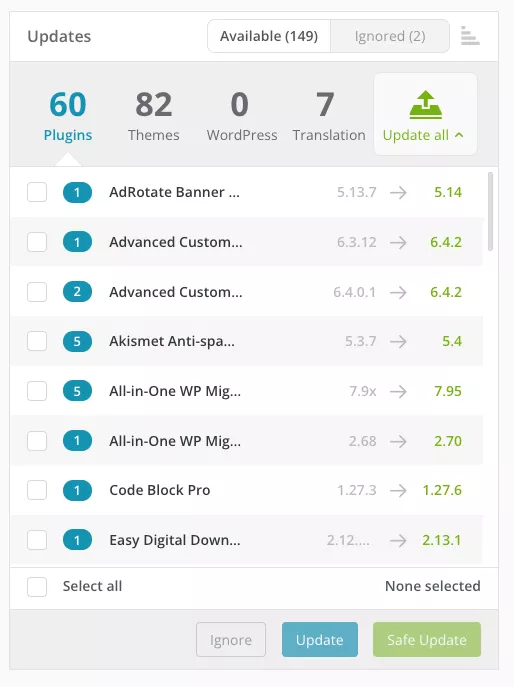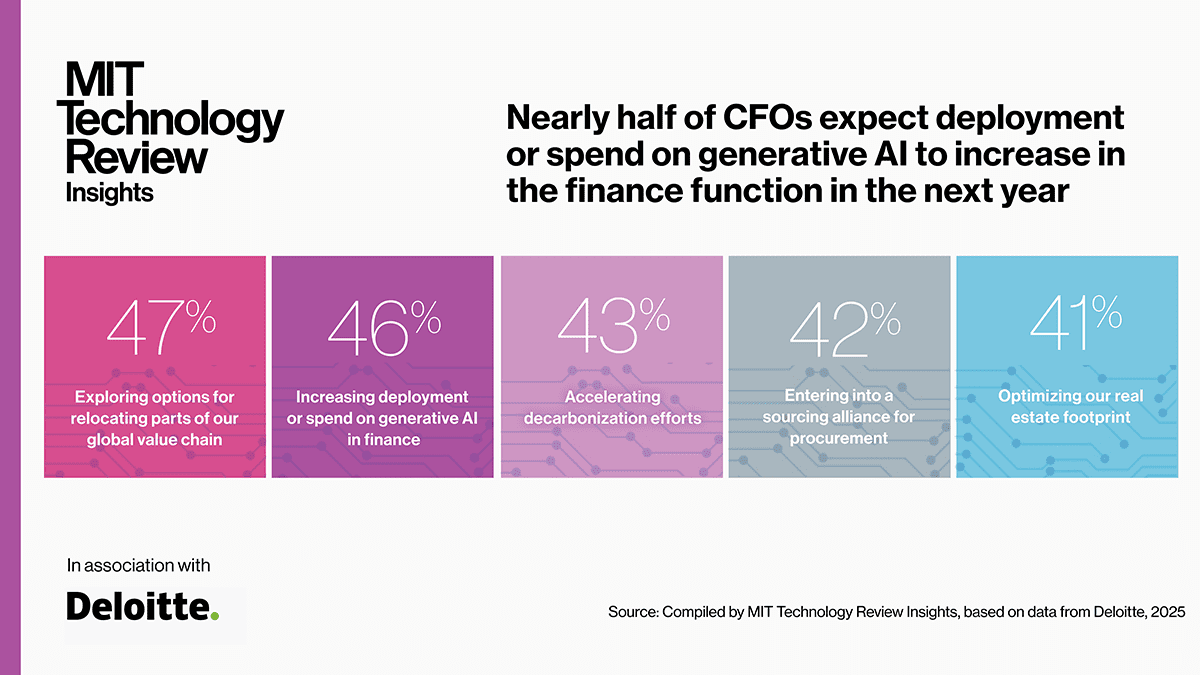3 Different Ways To Do Bulk Updates On WordPress
One of the strengths of WordPress is its extensibility. You can run everything from e-shops and booking systems to massive WordPress multisites from one instance of WordPress.
Another is that it’s a database and robust PHP-based programming language, which means that running a bunch of updates on a site is remarkably straightforward.
In this post, I’m going to present three different ways to bulk update WordPress.
A quick word of caution before starting to look at this: Things like misaligned fields or plugin conflicts could result in unintended results, so if you’re doing any large-scale updates, be sure to back up beforehand.
Also, for the content updates, it’s worth running a small test. Ten or so posts as a tester is a good way to start, before running it through the entire site.
1. How To Bulk Update Content On A WordPress Website
Simple Changes To Existing Content
If you want to make simple changes to existing content, such as bulk change the author, status, or taxonomies on a number of pieces of content, one thing you can do is use WordPress’ pre-existing bulk editing component.
From the edit posts/pages page, you can tick individual posts and pages and select “Edit.”
From there, you can set all posts’ categories, tags, statuses, and other information quickly and easily. Once done, click the “Update” button.
 Screenshot from WordPress, August 2025
Screenshot from WordPress, August 2025Please note: This will replace all categories, but tags will be added. This is probably the most common way of editing content, which you probably already know about!
Importing And Exporting Content
Let’s say you want to bulk add WordPress content on a WordPress website.
The most common version is that you want to import a set of blog posts, or indeed, you have a list of products within a spreadsheet that you want to import into a system like WooCommerce; it depends on where you’re importing from.
If you’re combining a WordPress export and importing it into another blog, the best way is to use the default WordPress Importer plugin.
If you’re moving content between WordPress sites, use the default WordPress Importer. It reads WXR (.xml) export files and can optionally download and import file attachments.
If you are using WooCommerce, then the best course of action would be to use the default WooCommerce product importer.
It’s pretty robust and can take a standard CSV, XML file, or spreadsheet and import it. You can map these fields to WooCommerce fields, which is a bit more work.



For WooCommerce products, use the built-in Product CSV Importer/Exporter and map your columns to product fields.
Should you be importing content from a non-standard source (like a CSV or a feed), a great plugin to use is WP All Import.
For non-standard sources (CSV, XML, Excel, Google Sheets), WP All Import can map fields to any post type and even run custom PHP during import. Add-ons cover ACF, Yoast, and WooCommerce.
It’s a freemium plugin, with the premium version allowing integrations with ACF, Yoast & WooCommerce. To talk through the power of WP All Import is a blog post in itself. However, I can share a common usage.
Say you wish to update all blog posts with new standardised title tags, you can use the companion plugin WP All Export to export all post data.
Then, within Excel or Google Sheets, you can change individual values, and then use WP All Import to import the blog posts back in.
2. How To Handle Bulk Plugin Updates On A WordPress Website
Of course, behind the scenes – and one of the most common tasks with WordPress blogs – is making sure that plugins are all up to date.
Keeping plugins up to date is a crucial task in keeping your site secure and running smoothly. Thankfully, if you only have one site, it’s very easy to do a bulk update.
Log in to your WordPress site as an administrator, and under Dashboard, there’s a heading entitled “Updates.” Click it to take you to the updates screen.



Scroll down a bit, and you should have a list of plugins towards the bottom that need an update. Similarly to the bulk editing, there will be a checkbox next to each element.
Select all checkboxes for the plugins you wish to update (and – in all reality – you’d want to make sure you select all plugins).
Click “Update Plugins,” and then all plugins will be brought up to date!
Your site is unlikely to break even with a large number of backups. However, in the extremely unlikely event the site breaks after updating a bunch of plugins, there are ways to recover, which you can read in the article “How Do You Resolve A Plugin Conflict.” Go to the log files and deactivate the plugin via FTP.
Alternatively, here are a few other techniques to do bulk updates successfully:
- Update in small batches (e.g. split by functionality, or by letter). Update, reload key pages, then move on.
- Back up and test on staging before production.
- If you use a maintenance dashboard like ManageWP, run Safe Updates (it creates a restore point, runs the updates, visually compares pages, and rolls back if something looks wrong).
- WordPress Command Line Interface (WP-CLI) lets you preview or update plugins individually:
- Preview:
wp plugin update yoast-seo --dry-run - Update one:
wp plugin update yoast-seo - Update all (use with care):
wp plugin update --all
- Preview:
3. How To Handle Bulk Plugin Updates On Multiple WordPress Websites
That’s all fine for one WordPress site. However, if you are managing multiple WordPress sites, then it can be a bit time-consuming to handle plugin updates on multiple WordPress sites.
Thankfully, I covered this in a previous article, “How to manage multiple websites on WordPress.”
In that article, I shared a number of WordPress maintenance dashboard services that exist, which will allow you to log in and update multiple WordPress sites from one singular location.
Here are some of the most popular:
Although each of these platforms has premium offerings that vary with cost and features, they also offer plugin and theme updates for free.
I use ManageWP, so once you connect your site to ManageWP, you should see a dashboard with the number of plugin updates you need to do spread over a number of sites. Simply click “Update All” to update all plugins on all installations. Alternatively you can tick the checkboxes and “Update” to select individual plugins to install.



You can also filter by sites and severity of updates within ManageWP. There is a premium option to do a “safe” update, which will allow you to run an update, check the site, and roll back if anything breaks.
There’s a good selection of ways to carry out bulk updates within WordPress. There are also command-like tools like WP CLI (mentioned above) to build scripts to run on sites. However, that is worth an article in itself.
To bulk update all plugins in WP CLI, you can use this command:
wp plugin update --allThis will update all plugins on an individual site and you can expand that to a script to run on multiple sites.
WP CLI is so powerful and really should be used for agencies to manage multiple websites quickly and easily.
Wrapping Up: Bulk Updates For A Smooth-Running WordPress Site
WordPress makes it straightforward to handle bulk updates, whether you’re tweaking content, importing products, or keeping plugins in check.
Across the built-in tools and available plugins, there’s a solution for just about every scenario. The key is to test changes in small batches and always keep a backup handy.
With a little prep, you can save hours of manual work and keep your site (or sites) running smoothly and efficiently.
More Resources:
Featured Image: GaudiLab/Shutterstock






